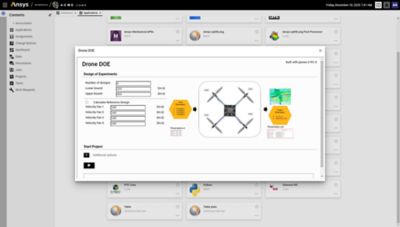-
United States -
United Kingdom -
India -
France -
Deutschland -
Italia -
日本 -
대한민국 -
中国 -
台灣
-
-
產品系列
查看所有產品Ansys致力於為當今的學生打下成功的基礎,通過向學生提供免費的模擬工程軟體。
-
ANSYS BLOG
March 23, 2022
Forget the Conventional Wisdom, Simulation Is Not Just for Specialists
Over the past few years, there’s been a lot of talk in the world of product development about making engineering simulation and other specialized tools accessible to all team members. The need to engage non-experts in creating, running, and managing product simulations has never been more urgent.
Not only do product development teams face growing product complexity, increased demand for innovation, and mounting cost and time pressures, but they are also challenged by an extreme shortage of engineering talent. One study1 found that it takes an average of 62 days to hire a mechanical engineer, and projects that there will be a true labor crisis in the field of mechanical engineering by 2026. Experts call the engineering talent shortage a “top risk factor2” for companies, as it inhibits the ongoing development of 5G, artificial intelligence, and other important technology innovations.
With the increasing scarcity of engineering talent and the pressing need to optimize simulations, we need to discard the idea that only trained specialists can manage simulations. It’s time to truly democratize simulation by inviting designers, project managers, and other members of product development teams to participate on a daily basis.
Expanding your team members’ everyday involvement in the engineering simulation process not only pays dividends in terms of speed and productivity, but also spurs new levels of creativity and innovation. Non-experts in simulation bring a diverse range of perspectives that a core engineering team may not have considered, leading to product and process improvements.
In addition, simulation can be applied at an earlier stage of the product development process and at more frequent intervals if additional stakeholders are able to leverage its capabilities. For example, a mechanical design engineer could begin to visualize product performance via lightweight simulations early on, without waiting for a simulation expert to conduct a more detailed study of a fully realized product model. If your team can identify and address design issues at the earliest stage possible, this can accelerate the entire development cycle and help realize a product’s final design with a much smaller investment of scarce resources.
Why don’t more companies invite broader participation in engineering simulation, even when confronted with extreme engineering talent shortages? Historically, simulation has been seen as requiring a highly specialized skillset, and it has often been viewed as intimidating by non-expert members. Designers, project managers, and other team members lacked an easy, accessible means to create, manage and run lightweight simulation.
Fortunately, that has changed.
Put The Power of Simulation in Everyone’s Hands with Ansys Minerva
Developed by Ansys and based on 50-plus years of industry leadership, Ansys Minerva demystifies and simplifies the process of creating and running lightweight simulations, opening these activities up to a wider range of participants.
Ansys understands how product development teams work every day across multiple functions and roles, supported by a tool kit of advanced technologies and large datasets that may not be integrated. Minerva addresses this challenge by providing an open platform that connects disparate databases, technology systems, and specialized tools — creating a vendor-agnostic virtual environment that breaks down functional siloes and enables the entire team to participate in simulation, modeling, and analysis. This enterprise-level simulation process and data management (SPDM) platform is unique in the product development technology landscape.

Minerva:
- Acts as a central repository for all simulation-related data, processes, and apps
- Supports cross-functional visibility and transparency
- Automates project handoffs among team members
The result? Your product development projects can continuously move forward at an accelerated pace, supported by multiple team members and functional roles, in an environment that’s built for collaboration. You can maximize the return on both your technology and human resources investments as you drive higher levels of innovation and faster, more frequent product launches.
Start Increasing the Diversity and Innovation of Your Team Today
While making simulation accessible to non-experts has long been an industry priority, many product teams have struggled to bring this concept to life in the workplace. Recognizing this challenge, Ansys developed Minerva to help facilitate everyday involvement and collaboration across members of product development team.
Given the shortage of talent brought to light by the "Great Resignation3," it’s time to leverage the capabilities of more product development stakeholders to power your innovation process. Start maximizing your technology and human resource assets today by requesting an assessment of Ansys Minerva.
1. "Crisis expected for shortage of Mechanical Engineers by 2026," Jacob Darr Associates, March 4, 2020
2. "Engineering Talent Shortage Now Top Risk Factor," Semiconductor Engineering, Feb. 25, 2019
3. "Big Tech is suffering from a ‘Great Resignation’ of workers, who say ‘It’s a good time to leave,’" MarketWatch, Aug. 6, 2021










